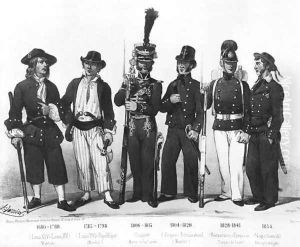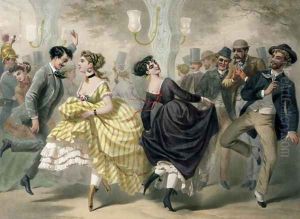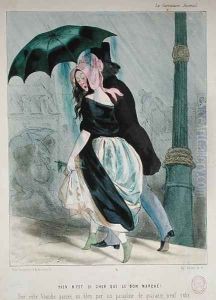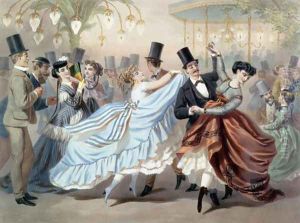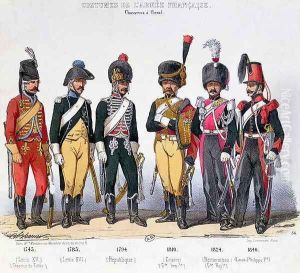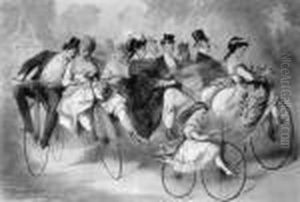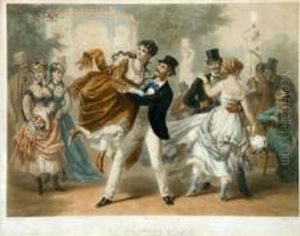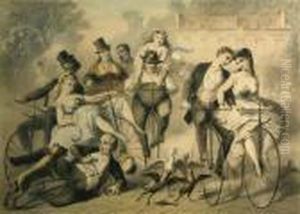Charles Vernier Paintings
Charles Vernier was a French lithographer and caricaturist born in 1831. While not as widely recognized as some of his contemporaries, Vernier made a significant contribution to the field of lithography, a form of printmaking that was widely popular during the 19th century. His work often displayed a sharp wit and a keen sense of observation, characteristics that are hallmarks of effective caricature.
In the context of French art history, Vernier's lifetime spanned a period of considerable social and political change, which included events such as the revolutions of 1848, the Second French Empire under Napoleon III, and the establishment of the Third Republic. These tumultuous times provided ample material for artists and caricaturists like Vernier, who used their art to comment on society and politics.
Vernier's lithographs were often featured in periodicals of the time, which was a common practice for caricaturists. These illustrations would satirize everything from political figures and events to the mores and customs of the day. Vernier's work was part of a larger movement of caricature that was particularly robust in France, with other artists like Honoré Daumier and Paul Gavarni also contributing to the genre.
Despite his contributions, Vernier did not achieve the same level of fame as some of his peers. Nonetheless, his works remain as historical documents that offer insight into the public discourse and societal concerns of his time. They are valued by historians and collectors for their artistic merit as well as their historical significance.
Charles Vernier's death in 1887 marked the end of a career that had spanned several decades, during which he had the opportunity to document and critique a dynamic period in French history. Today, Vernier's lithographs can be found in various art collections, museums, and archives around the world, where they continue to be appreciated for their historical and artistic value.
